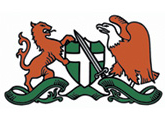If you were to look for active means of transportation, trains and subways would be a reasonable option in Los Angeles. Some of the common forms of rail transportation include commuter trains, trams, and subways. Since trains and subways are convenient and affordable, you'll find that the system is busy most of the time.
From the activities around mass transportation, simple errors may arise. Simple operator error, manufacturing error, or low maintenance may lead to catastrophic injuries when accidents happen. The injuries can be debilitating and life-threatening, costing your financial standing and emotional burden to the victim and family.
California allows a victim to be compensated for the catastrophic accident. You will be required to prove beyond a reasonable doubt that the defendant's negligent actions caused the accident. Even though it may be a complex matter to prove, you may have to determine the train or subway station owners, the reason for the defendant's accident, and negligent actions.
To some extent, you may even need to charge the government, making it ideal to hire Los Angeles Car Accident Attorney's services to argue the case for your sake and settle on the most appropriate compensation for the bodily harm.
Overview of Train and Subway Accidents
Trains and subways attract most learners, laborers, and tourists who run their daily errands to attend school, work or visit local tourist destinations because of their efficiency. Compared to other means of transport, trains are safer but are riskier when accidents happen.
Statistically, the US experiences more than 2,500 accidents from trains and subways in a year. This type of accident affects not only the passengers but also the bystanders or employees within the station. The known types of these accidents are:
-
A derailment accident, which happens when the train's wheel runs from the rails. This can be due to bumping into other objects, the wheel's mechanical failure, and other operational mistakes.
-
Train crashing accidents - Though rare, these accidents are catastrophic and occur when two trains collide at high speed. Train accidents result from human error, design faults, and automated hitches.
-
Space accidents - Occur where a commuter overlooks the space between the climbing Dias and the train, making them fall into space and get injured.
-
Criss-cross crashes between oncoming trains and vehicles. This type of accident portrays the vehicle driver at fault because the law needs them to surrender to the train.
-
A collision between pedestrians and trains - It happens when pedestrians walk on the trail of a moving train.
-
Blast detonation crashes which occur when trains transport hazardous items or materials.
-
Misstep and fall accidents on subways floors and escalators. They result from poor maintenance, station workers' carelessness, and inadequate warning signs of the slippery floor.
These accidents are usually a result of an error and can be disturbing if you suffer from catastrophic injuries. More so, when a pedestrian collides with an incoming train, the accident can cause death.
FRA spells out that all railroad accidents be reported to the board, affecting the workers and non-workers. However, the reporting condition differs depending on the extent of injuries suffered by the victim. In cases where a victim is a non-worker, the railroad should report the injury:
-
Requiring proper medical attention
-
Results in loss of sensibility
-
Having significant injuries
-
Happened on railroad establishment
-
That occurs while in connection to train operation.
The company may need to contact the involved parties in the accident to know the nature of their injuries. If the company contacts you, it's proper to report all details about your injuries because if you fail to comply, you risk a claim later on. Therefore, seek medication first after an accident to know the extent of the injuries.
Causes of Train and Subway Accidents
There are various reasons why these crashes occur. The most common cause is when cars try to beat an oncoming train at a crossing point leading to a crash. When the accident occurs, it's the driver, passengers, and in some cases, passersby who are involved.
The known prevalent causes of these accidents are:
-
Negligence
Negligent actions can be blamed on various parties. The railway company may be negligent or even the workers themselves. On some occasions, government agencies may be the ones at fault for not pursuing their duties. Equipment manufacturers may also be responsible for providing parts or equipment not meeting the threshold leading to a crash.
The world is advancing in technology, and maybe outdated technology in trains and subways may be the leading cause of accidents. It calls for companies to employ recurrent technology to improve the safety of trains and subways. However, some companies do shy off because of the hefty investment the technology requires.
-
Human Error
When unskilled conductors involve themselves in railway stations' operations, chances are errors may arise, leading to accidents. Though the experienced personnel may also make a mistake, there are negligible chances of them happening.
Fatigue is also a contributor to conductors to make inevitable errors at work. When employees work longer hours, they are prone to making mistakes, which would not happen if they were well-rested and alert.
-
Careless Drivers and Pedestrians
Not all train and subway accidents happen because of the recklessness of operators or their companies. Sometimes, the driver can be intoxicated, or a pedestrian may be reckless and distracted, leading to an accident.
A pedestrian may be deep in thoughts and wander into a railway line, and an oncoming train may be near, causing a crash. A train or subway is not designed like vehicles, which may stop abruptly. When a pedestrian steps on the railway line, there's a likelihood that the train will crash them.
-
Mechanical Failure
Despite all rules to ensure safety followed by the train company and its employees, an accident may still happen. It might result from mechanical failure, which is a rare occurrence. A faulty part in a train or subway can cause a breakdown while in motion causing an accident.
For a train or subway to function well, many parts have to be well coordinated. It's a perfect harmony that provides electric and locomotive power. Should the brakes fail, a catastrophic accident is inevitable.
-
Fast-moving Trains and Subways
Moving at high speed can be very dangerous. An operator may not control a train or subway at the crucial time leading to a crash. High rates further escalate the crashes' probability when the trains are derailed from the tracks causing severe accidents.
-
Damaged Tracks
Obstruction in tracks is a known challenge that would make a train derail. The presence of foreign objects on the tracks would also result in serious crashes. Conductors should check their surroundings to ensure the tracks are safe from materials that cause an accident.
-
Derailments
When we talk of a derailment, it implies that a train goes off its rail. If this happens, an accident's chances are high because of collision with an object, conductor error, mechanical failure of the track, broken rails, or even defective wheels. So when a derailment occurs, more so a significant one when the train is at high speeds, catastrophic consequences arise.
-
Unprotected Railroad Crossings
Most of the railroad crossings do not have signs and warning devices like gates and lights. It makes these areas prone to accidents when these areas are not protected. In these intersections, accidents happen because of poor visibility, distracted drivers, malfunctioned signals, and intoxicated drivers.
-
Stalled Cars on a Railway Line
Most vehicles do not stall on railway crossing points. However, when a driver slows down to cross a bump, the car can stall if the engines fail to function correctly. If there is a train approaching, the chances of a collision are high, causing catastrophic injuries. However, if the train is not so near, the driver can take off their lives because their safety is more important than the vehicle.
-
Suicide
People who attempt to commit suicide may do so on tracks. An individual may stand on the trails and see a coming train jump onto the tracks to accomplish the mission. Though they may be satisfied to have died, the practice also endangers the passengers' lives on the train.
Catastrophic Injuries in Train and Subway Accidents
Catastrophic injuries in train and subway accidents are usually a significant concern for the victim and the families. Often it's the family that shoulders the hospital bills when a loved one is involved in an accident if the insurance cover is depleted.
From the costly medication to disabilities that may arise, victims usually experience low moments in those situations. At times they may even depend on primary care when they are not able to return to work.
Some of these crashes can be avoided if all the necessary precautions are put in place by maintaining trains and subways conditions. Employees can be active and alert to minimize accident occurrences.
It may lead to catastrophic injuries in the brain requiring substantial medication and significant stay at the hospital when an accident happens. In some cases, you may even die from the injury or even have a permanent condition.
For horrific brain injuries, it can be severe even to reach the brain. The signs may be moderate to severe, with catastrophic injuries having a high likelihood of resulting in death. Statistically, traumatic damages to the brain are the highest contributors to disability in more than five million Americans.
You can suffer from concussions, a milder form of severe brain injury that may include: mental, nervousness, vestibular, ocular, post-trauma, and cervical injuries.
The symptoms for concussions include:
-
Headache
-
Neck stiffness and pain
-
Memory loss
-
Sleeping pattern changes
-
Confusion
-
High susceptibility to light and sound
-
Concentration problems
-
Revulsion
-
Dim vision
-
Mood swings
Even though most concussion symptoms clear off within some time, some may last longer and develop into a post-concussion disorder. The syndrome signs are migraine, weariness, dizziness, nausea, and susceptibility to light and sound.
If you suffer from catastrophic brain injury, you may have the same signs as concussions with additional symptoms like:
-
Convulsions
-
Extended loss of alertness
-
Persistent headaches
-
Seizures
-
Drainage of fluids from the ear and nose
If you notice any of the signs and are still conscious, it's that time to seek emergency medication. The nature of traumatic brain injury depends on the severity of the injury, and the possible signs are migraines, epilepsy in post-traumatic forms, and permanent damage of the brain.
In other cases, you may have spinal injuries in that train and subway accident. It can either affect the thorax or cervical spine. The symptoms of spinal injuries are:
-
Weak muscles
-
Muscle convulsions
-
Loss of sense and touch
-
Breathing problems
-
Sexual dysfunction
-
Numbness
-
The stinging sensation on the back
If the symptoms become extreme, seek immediate medical care if:
-
Extreme pain in the back or immense pressure on the head, neck, or back
-
Weakness or stopping body parts coordination
-
Loss of sensation in the hands, fingers, toes, or feet
-
Bladder problems and control in the bowel
-
Difficulty in balancing when walking
-
Breathing difficulty
-
Odd position of the neck
The spinal cord plays a critical role as a part of the brain system. It facilitates the connection between the central nervous system, the brain, and the body. Therefore, injuring the spine means developing life-threatening complications that may need reconstruction or lifelong care. The complications are:
-
Bowel control problems
-
Bladder control problems, particularly in knowing when to relieve the bladder, increase the urinary tract’s chances of infections.
-
Loss of sense to the skin which increases the risk of bedsores development
-
Breathing difficulty
-
Circulatory control problems
-
Loss of weight and muscle deterioration
-
Flaccid muscles
-
Distress
-
Pain
-
Reduction in lubrication in women and change in men erection and maybe ejaculation
If the train or subway was carrying hazardous materials, a fire in the train, causing burns. When the severe burns increase, the injury gets deeper into the skin layers, which can be dangerous.
The burns are categorized into the first, second, third, and fourth degrees. First and second degrees are less severe than the third, which penetrate deeper into the skin and reach the oily tissues called adipose. It may further result in damage in the nerve that leads to paralysis requiring extensive medication.
Fourth-degree burns are worse than the others. The burns go deep into the layers of the skin and reach the muscles and even bones. This type of burn requires skin surgery and even grafting. A victim may also lose a sense of feeling because of complete nerve damage.
For catastrophic injuries in train and subway accidents, treat the injuries as an extremity because they can expose you to other conditions like swelling in the tissues and loss of fluid. It's a noble idea to contact a skilled attorney to help you evaluate your compensation from the injury you got.
Liability in Train and Subway Accidents
If you're involved in a train accident, chances are your world can come to a standstill. You are going to suffer from the injuries resulting from the crash. However, you can sue the liable party to help you recover damages.
Before filing a lawsuit, you must identify the parties at fault. In California, every party is mandated to be responsible for passengers. If you can identify the party who contravened their responsibility, your claim can be successful.
Culpability in these accidents falls on any of the parties. It depends on the conditions surrounding the crash. If the accident happened because of operational error or design defects, the manufacturing company and train driver would be liable.
The liable parties are:
-
The manufacturing company or firm operating – Both the company and operators must ensure that the train and equipment function properly. For an operator, there must be the right instructional training and competency as per the federal regulations. The train company also should be supervising the personnel to minimize accidents.
-
Car driver – This applies to reckless drivers who cause accidents at crossing points. Collisions on this spot are because the car driver is not surrendering to the trains to have way first.
-
Manufacturer – Manufacturer has the task of designing and producing equipment that is safe for use. Therefore, if there is a design defect, they will be held responsible for the crash injuries.
It is also advisable for train station employees involved in an accident to file a claim under the FELA (Federal Employers Liability Act). It provides regulations protecting a railroad employee from getting injuries while working. However, you have to prove negligent actions to FELA that may be:
-
Failing of a railroad to give adequate safety training
-
Provision of unsafe equipment to the workers
-
Having long working shifts than the hours outlined by the law
-
Inadequate supervision of workers in a company
If you suffer from injuries from the mentioned accident, contact a lawyer to help you argue your case, whether you are a passenger or an employee.
Damages to Recover in a Train and Subway Accident
Since accidents involving trains can be severe, the law requires you to recover physical and psychological harm incurred in the accident. You may get compensatory and, in some cases, punitive damages if it applies.
For the economic damages, you will recover:
-
Medical costs
-
Loss of income
-
Loss of earning capacity
-
Damaged belongings
-
Vocational reformation
-
Rebuilding your home to take in deformity resulting from the accident
For the non-economic losses, you can recover from the mental anguish and physical pain from the crash. You may have life-threatening injuries that can make you suffer disability and affect you in the long run. Besides, you may suffer post-traumatic disorder affecting your general well-being.
The other damages you can recover in general include:
-
Grief and misery
-
Mental suffering
-
Humiliation
-
Loss of companion
-
Lack of life enjoyment
Even though these damages may be difficult to validate, their impact is not less, whether you have recovered or not. Therefore, you should lodge a claim against the suffering you underwent, and it's even better if a witness can testify for your sake.
For punitive damages, it is not an element of compensation when you get bodily harm. They can be awarded when the court finds the defendant to have grossly exhibited negligence.
But, you can recover damages for a wrongful death claim if a person close to you died from the crash. The damages you may recover include:
-
Medical expenses incurred on the deceased before their demise.
-
Requiem expenses
-
Burial expenses
-
Loss of service and companion
-
Loss of financial support
-
Loss of affiliation and consortium
It is better if you start the recovering damages process early. Even though it may take longer to get the compensation, you should begin collecting relevant facts to back up your case, depending on the case's complexity.
Ensure you collect the evidence while the accident is fresh to capture crucial information that cannot be obtained after some time. The specific time the crash happened, specific weather, and some people's presence can do away with the evidence and make it hard to prove your case in court.
Since insurance companies may try to play their usual mischief with you when settling the damages, having an experienced attorney will help you a great deal. They may help you determine the best offer per your injuries or proceed to the court for the best justice to be served.
Find a Personal Injury Attorney Near Me
The fatal and catastrophic injuries train victims suffer from are evidence of the danger posed by transportation. A train has a heavyweight and moves at a swift speed that requires active and alert personnel management.
If you get serious injuries, it can bar you from perfectly working or reducing your working life quality altogether. Our team of competent lawyers will walk you down the case to help recover damages for the injuries.
At Los Angeles Car Accident Attorney, we help you determine liability and file the right documentation to secure your rights. We thrive in the satisfaction of our clients, and if you win, we also succeed. Contact us today at 424-237-3600 for help.






